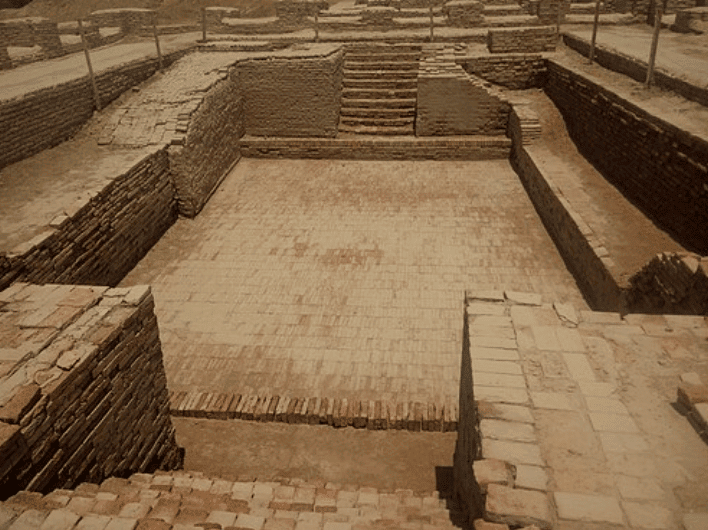Very Short Question Answers: The Beginnings of Indian Civilisation | Short & Long Answer Questions for Class 6 PDF Download
Q1: What is a civilisation?
Ans: A civilisation is when people live in cities, have a government, grow crops, trade, and share culture.
Q2: Where did the first civilisation begin about 6,000 years ago?
Ans: It began in Mesopotamia, in today’s Iraq and Syria.
Q3: Which river gives water to the fields in Punjab and Sindh?
Ans: The Indus River.
Q4: Why are the people of this civilisation called ‘Harappans’?
Ans: Because Harappa was the first city discovered by archaeologists.
Q5: Which ancient river flowed through Haryana and Punjab?
Ans: The Sarasvati River.
Q6: What was the Great Bath in Mohenjo-Daro used for?
Ans: It was probably used for bathing and religious rituals. Great Bath
Great Bath
Q7: What structure is famously known in Mohenjo-Daro?
Ans: The Great Bath.
Q8: Did the Harappans have advanced water systems?
Ans: Yes, they built drains, wells, and reservoirs.
Q9: What crops did the Harappans grow?
Ans: Wheat, barley, millets, and sometimes rice.
Q10: What was special about Lothal in the Harappan trade?
Ans: It had a big dockyard for ships and trade.
Q11: What material did the Harappans use to make beads?
Ans: A reddish stone called carnelian.
Q12: What was the main reason for the decline of the Harappan civilisation?
Ans: The climate changed, the rains became less, and farming became difficult.
Q13: What did the Harappans use to manage their trade?
Ans: Small seals made of steatite.
Q14: Which two main cities of the Harappan civilisation were discovered in 1924?
Ans: Harappa and Mohenjo-Daro.
Q15: What type of farming did the Harappans practise?
Ans: Large-scale farming with river water.
Q16: What was one of the main goods the Harappans exported?
Ans: Ornaments.
Q17: When did urban life begin in the Indian subcontinent?
Ans: Around 3500 BCE.
Q18: How did the Harappans ensure a water supply in their cities?
Ans: By building reservoirs and drains.
Q19: What spice was found in Harappan cooking pots?
Ans: Turmeric.
Q20: Which civilisation is one of the oldest in the world?
Ans: The Harappan civilisation.
FAQs on Very Short Question Answers: The Beginnings of Indian Civilisation - Short & Long Answer Questions for Class 6
| 1. What are the key features of Indian civilisation at its beginnings? |  |
| 2. How did the geographical features of India contribute to the development of its early civilisation? |  |
| 3. What role did trade play in the growth of Indian civilisation? |  |
| 4. How did the early Indian civilisation influence later Indian culture and society? |  |
| 5. What are some of the archaeological findings that provide insights into the beginnings of Indian civilisation? |  |






















